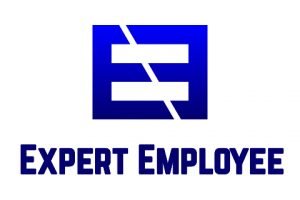This post contains affiliate links.
Most people only experience the hiring process from the candidate side. They see a job posting, submit an application, hope for an interview, and wonder what is taking the company so long to get back to them. Until they become a supervisor and get involved with hiring staff themselves the entire process can seem strange and senseless.
Established businesses follow a logical hiring procedure when they add staff. New positions that increase headcount receive more scrutiny, but even replacement hires are reviewed and not automatically filled.
We researched the hiring practices across many companies and industries in order to identify the common elements used nearly universally. This guide is written to assist the hiring manager through the process and is helpful reading for anyone to understanding the hiring process.

Identify the Business Need to Hire Staff
Owner: Hiring Manager
Before hiring managers ever post a job position, they need to justify the business need for their headcount. New positions get additional scrutiny, but even replacement hires for employee turnover are not always automatic.
When a staff member leaves, hiring managers do not automatically assume they need to replace the employee with another person who has the very same skillset. They examine how the work may have changed since the employee was hired and consider the advantages of adding additional skill to their talent mix.
They are not just trying to fill a job; they want to find someone who can add value and advance the objectives of the organization. They hire to strategically satisfy the needs and requirements of their department.
Evaluate Current Personnel Resources. Hiring managers evaluate their current team using a series of questions that identify critical aspects of their performance:
- Which key skills are present in current staff and which are lacking? Assess from both a technical perspective as well as behavioral competencies.
- Identify the job functions and type of work to be accomplished.
- Identify the skill levels and the number of people required.
- Consider the gaps that exist between the current and desired future workforce.
- Are employees’ talents being fully utilized, or is there room to promote from within?
- Is a senior person needed, or is it possible to feed the growth pipeline with a junior member?
Write the Job Description
Owner: Hiring Manager
Before hiring managers complete an Employment Requisition Form, they need to write an accurate & comprehensive job description. Job descriptions are the main tool used to identify candidates, and managers spend significant time on this step because it is so important.
With a more detailed job description, recruiting efforts can be more targeted, and the job posting will be more appealing to qualified candidates.
Job Descriptions should include:
- An overview of the position, including key job responsibilities
- The qualifications necessary to be considered: education level, years of experience, and specific skills or job knowledge
- Attributes that ensure success in the position: generally these are competencies from the behavioral interviewing questions (leadership, communication, flexibility, commitment, etc…)
- Qualifying questions that candidates must successfully answer in order to be considered for the job. These questions ensure that only highly qualified candidates are assigned within the applicant tracking system (ATS).
Source Resumes of Qualified Candidates for the Position
Owner: Staffing
Human Resources will determine and execute a targeted sourcing strategy for each position. Potential sources for quality resumes include:
- Current Employees
- Employee Referrals/Networking
- Company web site
- Internet job boards/advertising
- Searching resume database for existing applicants to meet criteria
- Additional advertising (trade journals, professional associations)
- Recruiting and staffing search firms
Companies place a high value on employee referrals. HR encourages hiring managers to utilize their strong employee networks to find potential candidates. New hires, professional groups and associations, vendors, and previous co-workers are utilized as sources of information.
Referral bonuses are common when current employees bring a candidate that results in a new hire. Employee referrals save the company fees from staffing agencies and job boards and bring higher-quality candidates because they get additional information from their connections.
Initial Candidate Screening Stage
Owner: Staffing
Typically Staffing will be responsible for the initial screening, but in some organizations the hiring manager will complete this step. The initial screening reviews the candidate’s application materials to make their decision:
- Review all internal/external candidates that pass the ATS qualification questions
- Identify candidates who move to the next step in the process. Candidate should possess:
- Job requirements & desired skills/experience
- Appropriate education level
- History of significant achievement
- Evidence of working through tough assignments successfully
- Provide feedback on “no fit” candidates and reject them in the ATS system.
- Revise the search criteria if necessary.
Best practices that are commonly followed within mature organizations:
- Human Resources maintains a training program to keep all interviewers compliant with hiring laws and regulations.
- Candidates that do not meet the minimum job requirements are not considered.
- Only Staffing members give feedback to unsuccessful candidates or recruiters representing them.
- Job requirements should be communicated as clearly as possible to external recruiters, and done in general terms with reference to a specific candidate.

Phone Screen of Qualified Candidates
Owner: Staffing or Hiring Manager
After the initial desktop review, the list is trimmed down to only the candidates that look good on paper. The next step is to complete an initial phone screen of external candidates that focuses on overall interest level, competency, and general “fit” topics. The phone screener should use the same list of questions for a majority of the phone screen to ensure consistency.
- Determine candidate interest in the company and the position
- Confirm candidate interest in the job location (if relocation is applicable)
- Verify the main points on the candidate’s resume and level of competency
- Evaluate candidate based on predetermined requirements and desired competencies specific to the job
- Manage expectations (duties of the position, and fit), technical experience, team & culture fit
- Determine compensation requirements, relocation needs, and legal right to work in the US.
- Look for opportunities to sell the company
Phone screeners should take detailed notes and quantify feedback when possible (use a 1-5 rating scale). This will make it easier for you to provide specific and reliable evaluations when dealing with many candidates.
If the candidate is “no fit”, the phone screener needs to communicate the reasons to Staffing, and Staffing will disposition the candidate in the ATS. Staffing will always try to protect candidate confidentiality.
Because the compensation, relocation, and eligibility questions are typically handled by Human Resources professionals, the phone screen may be split into two separate calls. The first call with the Hiring Manager to determine their technical ability and suitability for the position and a second phone screen with the Recruiter focusing on company, culture, and compensation experience and specific “fit”.
Phone screens do not apply to internal candidates. Candidates who are eligible according to policy and qualified for the position per the job description will be forwarded to the Hiring Manager by Recruiting. Normally Hiring Managers are required to interview internal candidates if they are eligible although a reasonable limit may exist if there are many candidates.
Candidate On-Site Interview Stage
Owner: Hiring Manager & HR
The Site Interview process has 3 major components:
- Preparation of Interview Schedule
- Interview Pre-Meeting
- On-site Interview
Preparation of Interview Schedule
Staffing will consult with the Hiring Manager to select interviewers, choose behavioral questions, and assign roles. Interview team selection is critical to making the best impression on the candidate.
Staffing will also consult with out-of-town candidates to determine their needs for being introduced to the local housing market. If necessary, Staffing will have a realtor contact the candidate to discuss potential housing needs.
It’s very important to have a diverse interview team. If all the interviewers are at the same level and in the same department you end up with a “one-dimensional” view of the candidate.
- Include senior or executive level people who can evaluate the candidate’s long term potential and ability to “see the bigger picture”.
- Include working level (peer and peer minus one) who can evaluate the candidate’s ability to be “hands-on” and work issues and projects at a detailed level.
- Include people from other departments who can evaluate their ability to work across functional lines. This is especially critical if the open position requires the person to support another group, so include someone from that group.
- Of course, HR must always be included because of their expert knowledge of workplace and corporate issues.
A “panel” model is frequently used for technical interviews. In this model, 2-4 interviewers will probe candidate on several technical areas. The panel interview gives an opportunity to evaluate several technical skills in a short period of time.
A “1:1” model should be used for behavioral interviews. The 1:1 interview allows to thoroughly probe candidate on specified competencies. It also allows the interviewer and candidate to build a strong rapport.
Interview Pre-Meeting
For experienced hiring teams the pre-meeting may not be necessary, but for each new position it is important to coordinate each interviewers role and responsibilities. You want to achieve an effective interview process without duplication – candidates find it strange when different panels ask the same interview questions and it makes our company appear disorganized.
All interviewers are representing the company and are responsible for the following items:
- Knowing all other interview team members for the candidate
- Understanding the interview process (what happens next, who has authority to hire, etc.)
- Understanding your role (what competencies you are responsible for probing) and when to limit it (letting HR address compensation and benefits issues)
- Understanding the job requirements for the position
- Understanding the local work environment
- Familiarizing yourself with EEO and other legal guidelines pertaining to the selection process
- Asking for support (interviewer training, help with creating questions) when you need it
- Treating each candidate with respect (be on time, do not interrupt the interview, set cell phone to silent mode, arrive prepared with a copy of resume and set of questions, be a good listener, offer to answer any candidate questions). Remember that candidates are also evaluating our company.
- Selling our company – when you find a good candidate remember to highlight the great aspects of working here with us.
Typically the Recruiter will schedule conference rooms for the entire interview, invite the necessary members to each session, and register the candidate in the visitor system with security. Recruiters will also send the candidate their interview packet via email that contains their interview schedule, non-disclosure agreement, employment application, voluntary self-identification form, and travel expense report.
The On-Site Interview
Owner: Hiring Manager & HR
The following steps describe a basic Site Interview format. Each hiring team should add additional people as needed to enhance the selection process and/or candidate experience (for example, cross-department interviews should be included for “service” oriented positions). Hiring Managers will be responsible for coaching their interview team members on achieving successful behavioral interviewing results.
- Welcome Interview: Initial welcome and evaluation by Hiring Manager
- Technical Evaluation (panel): 2-3 people from department + optional HR Observer
- Behavioral Evaluations (1:1): Interviewer(s) will evaluate 2-3 specific skills using the Behavioral Interviewing (BI) Method.
- Manager/Director Interview: Executive evaluation. May or may not be from hiring department.
- HR Interview: HR Representative will evaluate 1 or more competencies (usually including Diversity), gauge candidate interest and discuss any final questions/issues
- Breakfast, Lunch or Dinner meetings may also be scheduled with HR approval. Where appropriate, candidate should be given a tour of their relevant work area
- All Interviewers are responsible for creating a positive impression and for selling the company (we are recruiting and candidates will post their experiences on social media)

Interviewing Overview
During the interview process, the main objective is to try to make valid predictions of employee success on the job. However, this must be done while also taking precautions to avoid legal problems with the selection process. Following a structured interview format will help create a valid and reliable process.
No matter what role you play on the interview team, remember that everyone is responsible for ensuring that your candidate leaves the interview feeling they were treated fairly, professionally, and respectfully.
Developing Interview Questions
To improve the validity and reliability of the interview process, your interview questions should:
- Be asked of all candidates (although probing questions may be individually tailored based on candidate experiences)
- Be directly related to successful performance on the job
- Be powerful enough to generate information that will distinguish the most qualified candidates from the least qualified.
The first step in developing good questions is to fully understand what you are looking for. Start by reviewing the job description. Identify the job-related experiences, behaviors, knowledge, skills and abilities that will make a candidate successful in the position.
You will then prepare two or three core questions that will be asked of all candidates for each of the skills, competencies, and behaviors identified. Normally, you will designate these specific probing areas during the “Pre-Interview” team meeting where roles & responsibilities are assigned.
Getting the Answers You Need
It happens frequently – you do a great job preparing for your interview, ou understand the job requirements, you have created some comprehensive probing questions, and you get the interview off to a great start. But 30 minutes into your conversation, you realize that you have not collected the information you really need to make an evaluation. Here are some tips on staying focused on your objectives:
- Focus on the candidate’s direct experience: Do not allow the candidate to overuse “we” when describing their former/current employment. You want to know the candidate’s specific role. One way to respond is “I understand that you worked with others, but I’m more interested in what you did on the project”.
- Do not accept generalities: Pin the candidate down for specifics. This will not only ensure that you get some important details to share with the interview team later, it will quickly expose any candidate weaknesses. “How did you implement XYZ project? / “What difficulties did you have to overcome to be successful?” / “How did the solution achieve initial goals?”
- Take control of the interview: Some job candidates will attempt to control the agenda, either consciously or unconsciously. Make every effort to stick to your planned agenda. If necessary, politely interrupt the candidate to bring the interview back on track.
- Be prompt: Be sure to start and end your interview on time. This will ensure that every team member has an adequate amount of time to meet with the candidate.
Legal Considerations. Title VII of the Civil Rights Act of 1964, the Age Discrimination in Employment Act of 1967, and the Americans with Disabilities Act prohibit employment discrimination on the basis of Age, race, color, religion, national origin, sex, age and disability.
Under Title VII, interviews are considered tests since they are a means by which an employer can disqualify an applicant from consideration for a job. Interviews cannot, therefore, be conducted in a manner that results in discrimination against an individual or group of applicants on the basis of a protected characteristic.
The goal is for interviews to be as objective as possible. It is imperative to base the interview questions on job-related issues only. Focus your questions on the applicant’s ability to perform all aspects of the job, and you will avoid straying into unlawful areas.
Remember, no conversation is “off the record”. It is imperative that all those who interview (and host the candidate) know the law as it pertains to hiring. Employers can be held liable for the actions and words of their employees. Be careful of “small talk”.
The Hiring Decision
Owner: Hiring Manager & Staffing
The Interview Team will make a Hiring Decision during a Wrap-up Meeting with the purpose to select high quality candidates meeting job requirements and reject candidates not meeting job requirements.
Preparation: All members of the interview team must complete the Interview Feedback Form before the meeting. Scoring and comments must be filled in for every section. HR will use these notes when preparing the offer proposal, so it is important that these be complete and accurate. At the end of the Wrap-Up Meeting, make any changes you feel are appropriate and give the form to HR. Do not keep a copy for your records.
Process: Each interviewer gives a five-minute appraisal of the candidate for the specific technical or behavioral skill evaluated.
- The hiring team will meet to evaluate the candidate and make their hiring recommendation (100% attendance is required)
- Each interviewer gives a score for that skill. Score on a scale of one to five, one being the highest.
- Each interviewer votes “hire” or “no hire” based on the specific skill.
- The technical panel presents evaluation first, followed by behavioral skill interviewers, then Staffing and the hiring manager.
- After these presentations, the candidate should have a set of recommendations, one for each skill.
- If the vote is a majority against the candidate, or evenly split, the candidate should probably not be accepted.
- If the vote is unanimous or almost unanimous, a discussion takes place. If there is one “contrary” interviewer, the role of that person is to convince the rest of the team that there is sufficient doubt in the skills of the candidate that he/she should not be accepted. The rest of the team has the responsibility to resolve the doubts raised and reaffirm their assessment of the candidate.
- The Hiring Manager is ultimately responsible for the success of the candidate once hired, so he/she will make the final decision based on the recommendation of the team. Some hiring teams use a consensus approach while others use a veto system where any member can prevent a “hire” decision.
- If a “hire” recommendation is made, Staffing will prepare a Request for Offer. The Hiring manager will be responsible for presenting to the executive level for approval.
Expert Tip: The hiring decision can seem complex, but it really boils down to just these four questions – if you answer yes to all four then hire them!

After the wrap-up meeting, all original Interview Evaluation Forms should be turned in to Staffing. Do not keep separate notes or copies. Reference Checks will be performed if they were deemed necessary.
When recruiting experienced candidates, it is very important to be aware of the need for maximum SPEED.
When Hiring Experienced Candidates, Speed is Key…
It’s very important when recruiting experienced candidates to be aware of the need for maximum speed.
Important works of art only come on the market for auction very occasionally, are then snapped up by millionaire collectors and become locked away in private collections for many years.
Top notch experienced candidates are similar in many ways. The best people are tied up on important projects and assignments where they are challenged and doing a good job for their company. The kind of people we want are also very loyal employees, so they will not be interested in changing companies while the conditions are good in their company.
However, occasionally a window will open up. Perhaps a project will be cancelled or completed, a reorganization will take place, someone gets a new boss they don’t like, gets passed over for promotion, or maybe there is some personal or family situation. Then there will be a very short time interval when the candidate will be “available”.
For good people, this window will be extremely short, maybe only a week or two. The person will be quickly reassigned or snapped up by another company. Once they have made a change and committed to a new assignment, it becomes extremely difficult to get them interested again.
The best recruiters will keep in touch with good people. Hiring Managers & HR should try to stay aware of these situations and always keep the lines of communication open with these potential candidates.
Companies with good hiring practices realize they do not have the option to “find some more candidates” for comparison purposes, because it will be too late. If the person is top-notch, they receive an offer. If not, they move on. If they are lucky enough to find two good candidates at the same time they will interview both in quick succession and then make a decision.
Once a “hire” decision is made the approvals and paperwork must be expedited and other recruiting activity is suspended until they land the candidate.
Another reason for speed is that candidate interest will be at it’s maximum right after the interview, but then drops off very quickly. After two weeks it’s safe to say the person has lost interest and the company does not want to have to start all over again with the “sell” job, which unfortunately by that time has to be over the phone.
The reason is because these top people have a lot of pride, and if they think the company is not interested in them they will start to believe they are a second choice candidate. Top people will not join a company unless they feel they will be given maximum support and freedom to contribute.
If they feel like a second choice candidate or that the job is not important to fill immediately, the company creates conditions that strong candidates will not accept. This can have follow-on impact as the candidates will relate negative impressions to their colleagues and friends. So speed is key.
Reference Check Guidelines
Reference checks are not a main selection criteria, but rather a way to reinforce our understanding of the candidate and potentially to catch an issue not detected during the interview process.
Reference checks can be conducted by members of the interview team, Hiring Managers or Staffing, depending on the situation. For example, an interview team member who knows the reference personally would be an ideal person for this task. Regardless of who conducts the reference check, the Hiring Manager is ultimately responsible for the success of the employee once hired.
Be very careful in the kinds of questions asked during reference checks. Technical questions should have been answered during the interview process. When probing for “softer” skills (leadership, teamwork, etc.), ask for examples where the candidate demonstrated the skill in question. Try to get specific information – general comments like “they are a good person” do not add much value.
Things to consider during a Reference Check:
- Source: If the referral is a current or previous employee (or other reliable source) with good judgment, we can attach a strong weighting factor.
- Relation to Candidate: Comments from a direct supervisor will normally be more useful than those from a co-worker.
- Timeframe: References who recently worked with the candidate will be more helpful.
- Potential candidates: The reference check is also an opportunity to collect intelligence and promote us as an employer. You can mention that we are hiring for several positions and you may be lucky to get an interested response. However, please remember the purpose of the call, and always represent our company with professionalism and integrity.
*The candidate should have selected people willing to give them a reference; however, please keep in mind that many companies have a policy against giving references.
From Offer to Accept
(Owner: Staffing)
Staffing will coordinate the following steps for external candidates only.
- Ensure all approvals are obtained on Request for Offer
- Resolve any known candidate issues and work to proactively ensure offer acceptance
- Prepare competitive Total Compensation package
- Coordinate start date, relocation, New Employee Orientation
- Background Investigation initiated*
- Verbal Offer is given to the candidate.
- Drug Test initiated (48-hour window from verbal offer to testing)*
- Offer Letter delivered to the candidate
- Minimize the impact of potential counter-offer
- Disposition the other candidates in a professional, timely manner. These candidates (or their referrals) may become future employees!
*If a candidate fails the background investigation, fails the drug test, or does not complete the drug test within the specified 48-hour window, the employment offer will be rescinded. There are no exceptions.
If the Hiring Team is concerned about a counter offer:
- Find out when candidate is giving notice & follow-up within 24 hours.
- Be prepared to offer support & encouragement
- Ask candidate if anything will be different due to the counter in 6-12 months. The same circumstances that now cause you to consider a change will likely repeat themselves in the future, even if you accept a counter offer. There are some things that money just cannot fix.
- How does the candidate feel about the practice of making counter offers? Some people are uncomfortable with a company responding to the “squeaky wheel“ – basically requiring a resignation before they value your skills appropriately. Many feel it reflects poorly on the integrity of the company and some even feel their pride has been insulted.
- Have you considered that this might be a stopgap measure to allow your manager time to postpone dealing with the problem or find your replacement?
- Where is the money for the counter offer coming from? Is it your next raise early? (All companies have fairly strict wage and salary guidelines that must be followed).
- Statistics show that if you accept a counter offer, the probability of voluntarily leaving in six months or being let go within one year is extremely high. National statistics indicate that 89% accepting counter offers are gone in 6 months.
- Have you thought about how accepting a counter offer will affect your relationships with your peers and management? Acceptance of a counter offer may sometimes leave your loyalty suspect.
Disposition Candidates
- Only the Staffing Department will give feedback to unsuccessful external candidates or recruiters representing them. The detailed evaluation of any candidate is considered onfidential information and must not be disclosed to anyone outside the interview team, including the candidate or recruiter. A generic message such as “not a fit for current openings”, “the position has been filled” will be delivered.
- It is important to communicate requirements as clearly as possible to external recruiters selected by Staffing. However, this should be done in general terms, such as “We are looking for xyz skills or experience”. Or “We are not interested in candidates with xyz background”. In other words, without reference to specific unsuccessful candidates.
- This is very different from feedback given to internal candidates. In this case, Staffing will provide the employee with appropriate feedback and coaching on how they can improve their skill level to better prepare for future openings or possible promotions. In all cases, this feedback is meant to serve as a guide to employees, not as a specific promise of future advancement. We believe our employees are responsible for “owning” their career development and that Staffing is responsible for supporting those efforts.
Keeping the Candidate Warm
Owner: Hiring Manager & Staffing
Between the time that a candidate accepts our offer and the time they begin work, many things can happen to influence the candidate’s commitment. We are responsible for ensuring the candidate continues to feel confident in their decision to join. Here are some things that Staffing and Hiring Managers can do to ensure a successful transition.
- Keep the candidate “warm” by maintaining periodic contact through their start date. This is essential for both Staffing and the Hiring Manager.
- Send a welcome gift, including the company newsletter and any other publications or articles that may help the candidate feel part of the team. Include expansion milestones.
- Put candidates in touch with peers or co-workers. Encourage them to begin networking.
- Invite them to an upcoming company event or local events.
- Offer assistance with relocation, which is always stressful for the candidate. Provide links to local resources and information.
